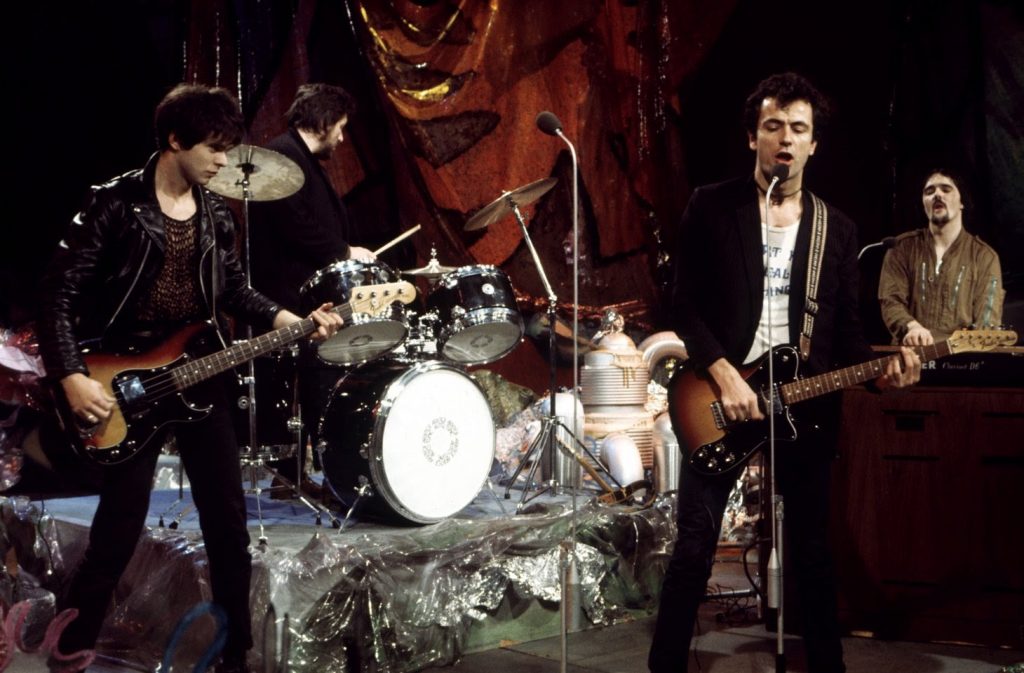Something’s happening and it’s happening right now

About the author
Kevin is a co-founder of PR Academy and editor/co-author of Exploring Internal Communication published by Routledge. Kevin leads the CIPR Internal Communication Diploma course. PhD, MBA, BA Hons, PGCE, FCIPR, CMgr, MCMI.

On 3 May 2020, the Stranglers keyboard player Dave Greenfield (pictured far right) died at the age of 71 after testing positive for Covid-19.
In the words of their 1977 single, ‘Something’s happening and it’s happening right now’.
Sometimes, I channel my inner punk to try to make sense of what is happening in the world of internal communication. Previously, I adapted the Clash single, ‘Lost in the supermarket’ to reflect on the occasional superficiality of communication. I trust that you will kindly indulge me in doing the same again.
One of my students who works in the hospitality sector told me that they had sold their head office in London. Just like that. The CFO had seen how much had been spent on travel to the building and rent and decided that it was an overhead that could no longer be justified. The CEO of Barclays, Jes Staley, was recently quoted as saying ‘putting 7,000 people in a building may be a thing of the past’.
We’ve known for a long time that people don’t need to commute to the office every day or travel the world for meetings. People who can work from home are very likely to do so much more in the future. This presents many challenges and benefits. Using Zoom or Teams is effective, to a point. But it does not fully replicate the social and business benefits of meeting people face to face. So, what’s the optimum work from home and work in the office balance? Research conducted in 2013 suggests that employees benefit from being in the office for 2.5 days a week. However, this is dependent on the freedom they have in using communication technologies for work. If employees feel in control of how and when they can use communication technologies, they can maintain meaningful interactions with co-workers. This highlights the importance of maximising the potential of internal digital platforms. Something that I think internal comms will need to prioritise quickly.
The immediate internal comms challenges are around wellbeing and return to the workplace. However, in the medium term there are three further, more fundamental, changes afoot; the democratisation of organisations, automation and AI.
Writing in his ‘Investing’ column in the Financial Times on 16 May 2020, John Redwood highlighted the ways that investors are ‘increasingly tapping into the digital revolution’ that will emerge after countries come out of lockdown. But what struck me more was his point that governments will expect organisations to ‘favour employees and customers more highly as the price of accepting state financial assistance’. We’ll have to wait to see exactly what ‘favouring employees’ means.
What this does emphasise is a growing recognition and understanding of employer responsibilities for ‘social justice’ in the workplace. This is a theme that is emerging in research that I’m currently doing with Howard Krais and Mike Pounsford on listening to employees. Of course, organisations are not democracies. And yet employees rightly expect to have more of a say about what goes on. Greater democratisation is good for organisations. It is linked with innovation, resilience and better performance. And it is good for employees. In making this point, I’m fully conscious that it sounds to some people like a socialist pipedream. ‘CEOs are just driven by the bottom line’ I hear you say. So perhaps in different times we need a new term. The ‘communicisation’ of organisations. By which I mean the way that communication is seen as a critical success factor and something that supports employee wellbeing. Communication in its fullest sense. Listening as much as informing.
The focus on internal digital platforms will accelerate in a post Covid-19 world. And it will be coupled with greater automation and use of AI in the workplace. This represents the biggest challenge, and opportunity, for internal communication that I will see in my lifetime. Automation is already here. For example, I heard recently of an organisation that uses software to do sentiment analysis for recordings of employee focus groups. However, it is AI that will reinvent internal communication. As Rachel Royall and I explore in the final chapter of the latest edition of ‘Exploring Internal Communication’, some of the ‘traditional’ communication capabilities such as copywriting will fade in importance as AI comes in and generates copy and stories for us. AI will incorporate better systems for employees to keep themselves informed which can be merged with systems for employee voice. Internal communication specialists can then focus more on activities such as leading, coaching, advising and business partnering alongside ensuring the ethical use of AI for communication, a huge challenge in itself.
For sure, the internal comms function ‘Ain’t got time to wait’ for this to happen to them. The time to embrace change is now.
Something’s happening and it’s happening right now
Ain’t got time to wait
I said something better change
I said something better change
I said something better change
I said something better change
Extract from ‘Something better change’ by the Stranglers – a song included in the set played when I saw them at the Odeon Canterbury in the UK on 25 September 1977.
This post was first published on http://ic-beyond.net/ See original post